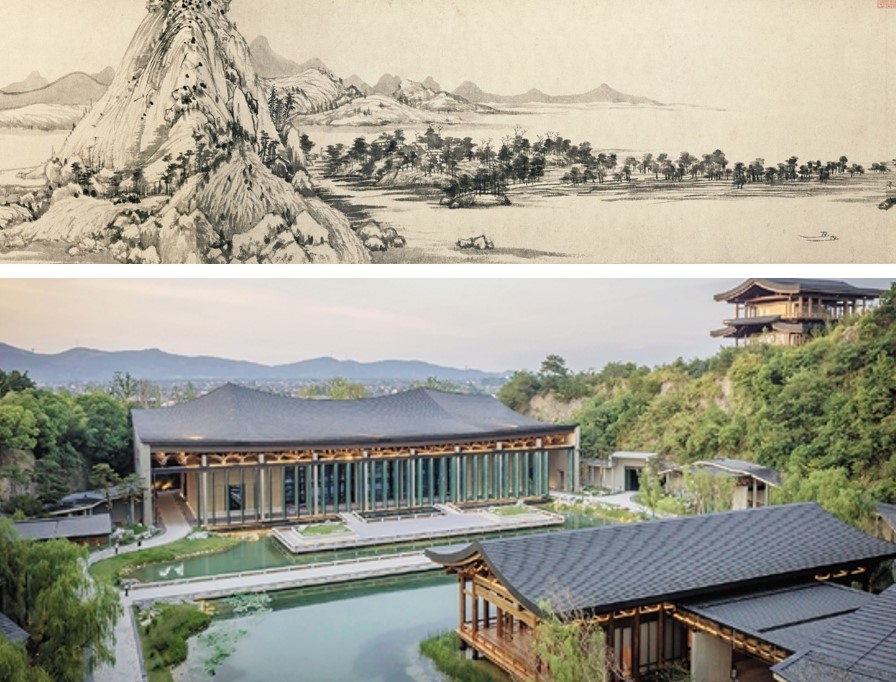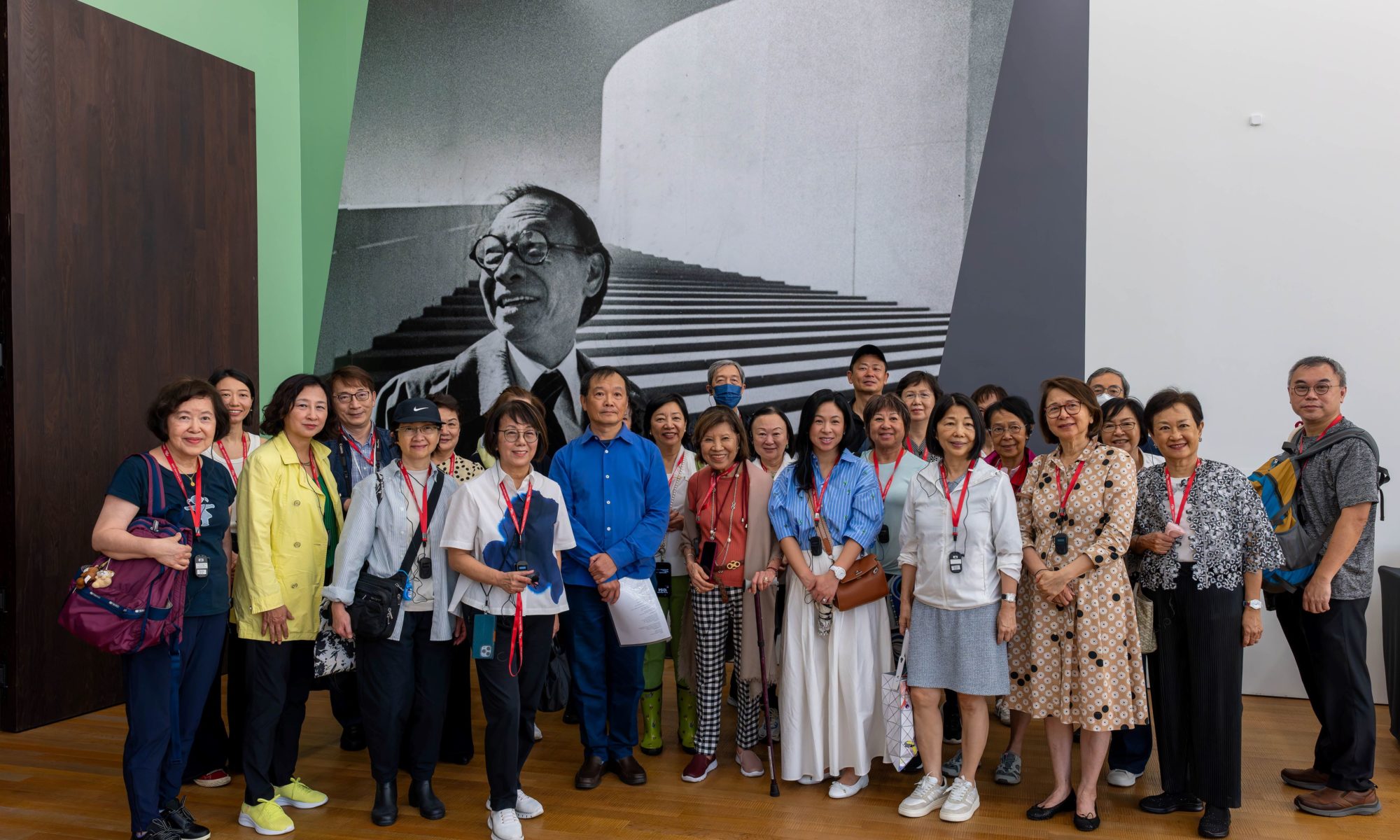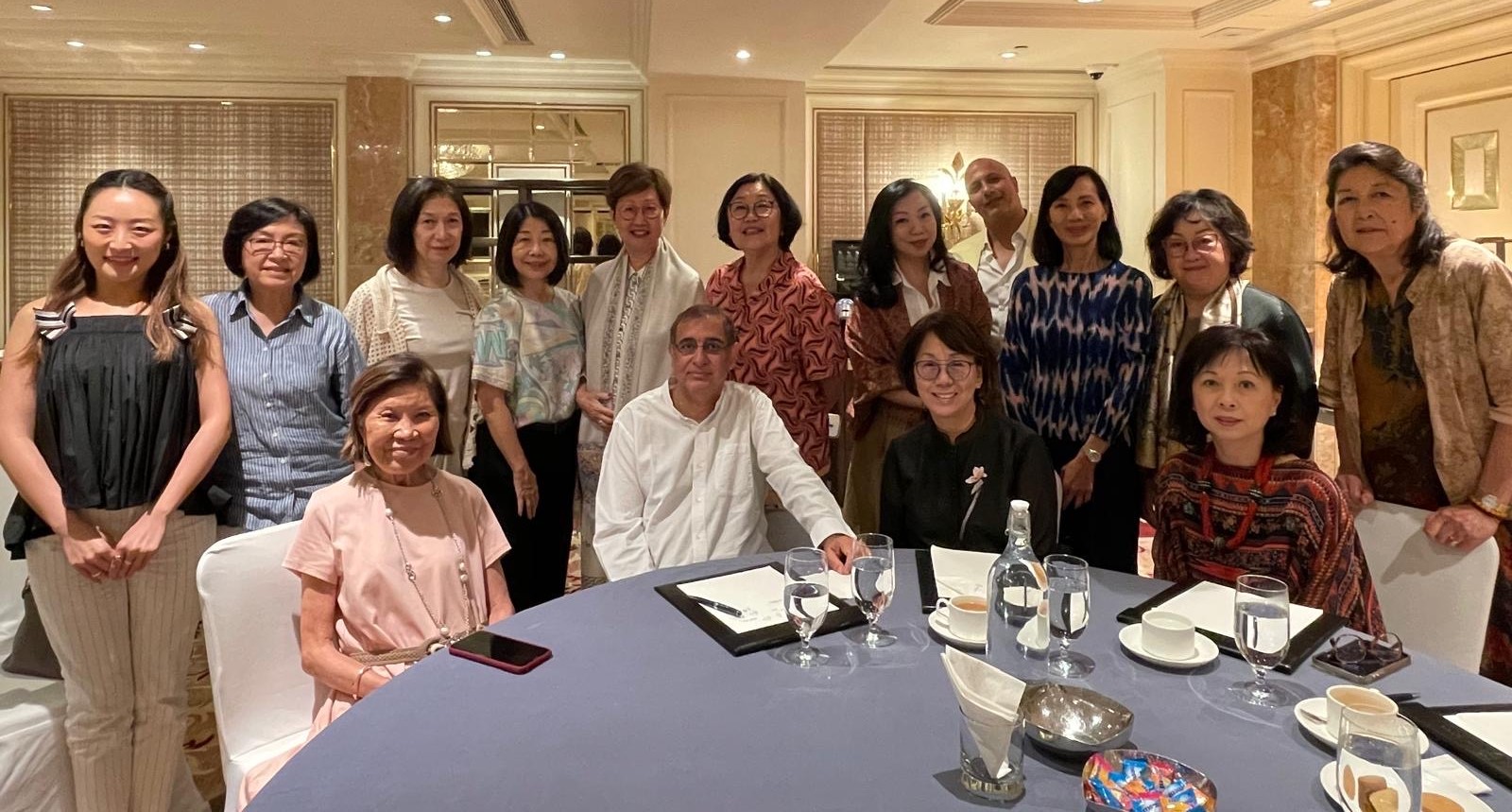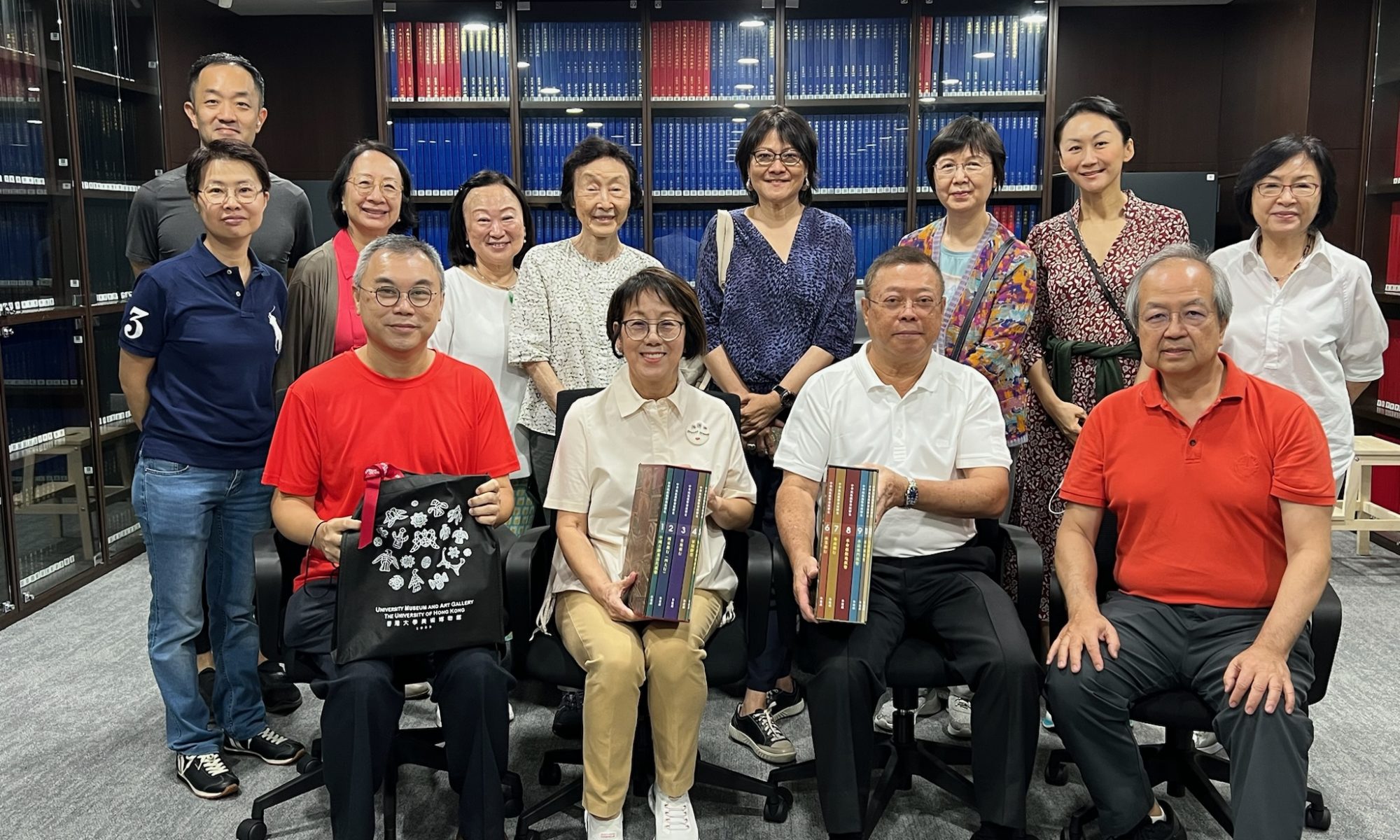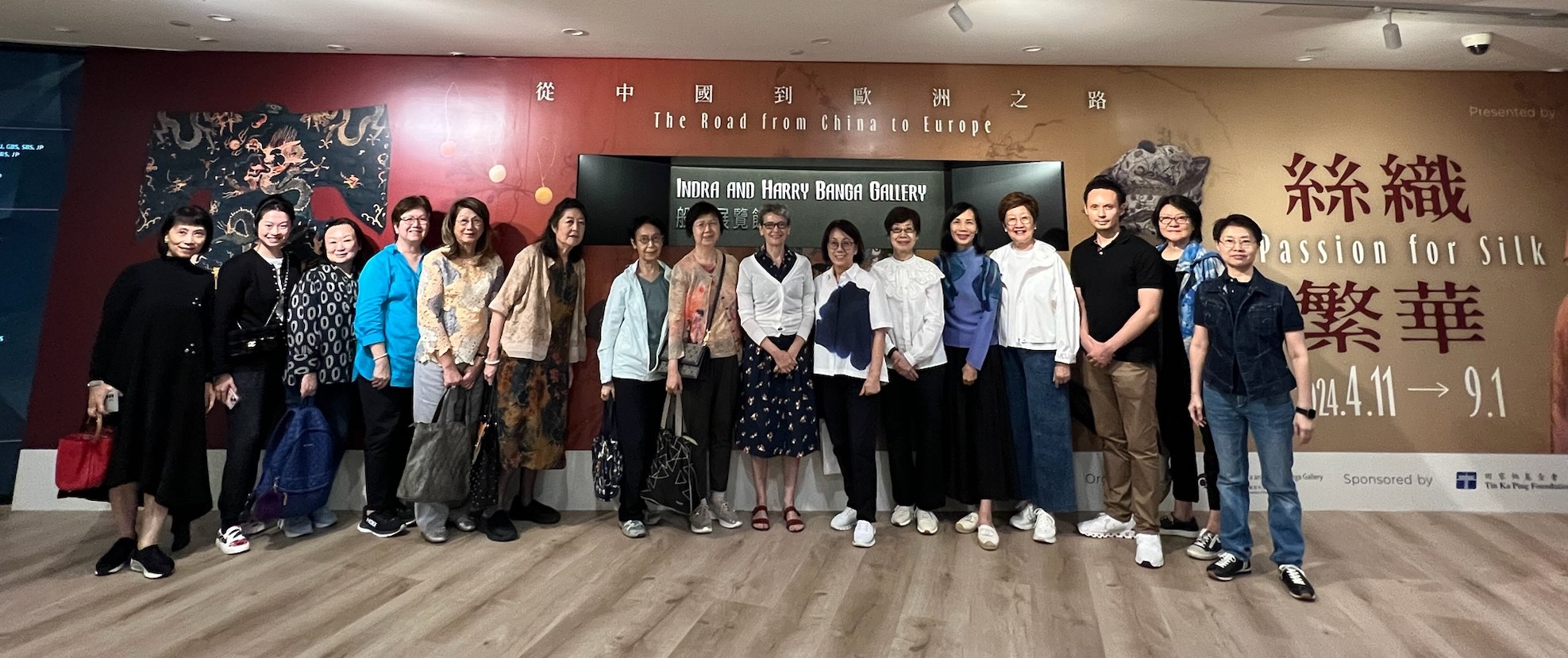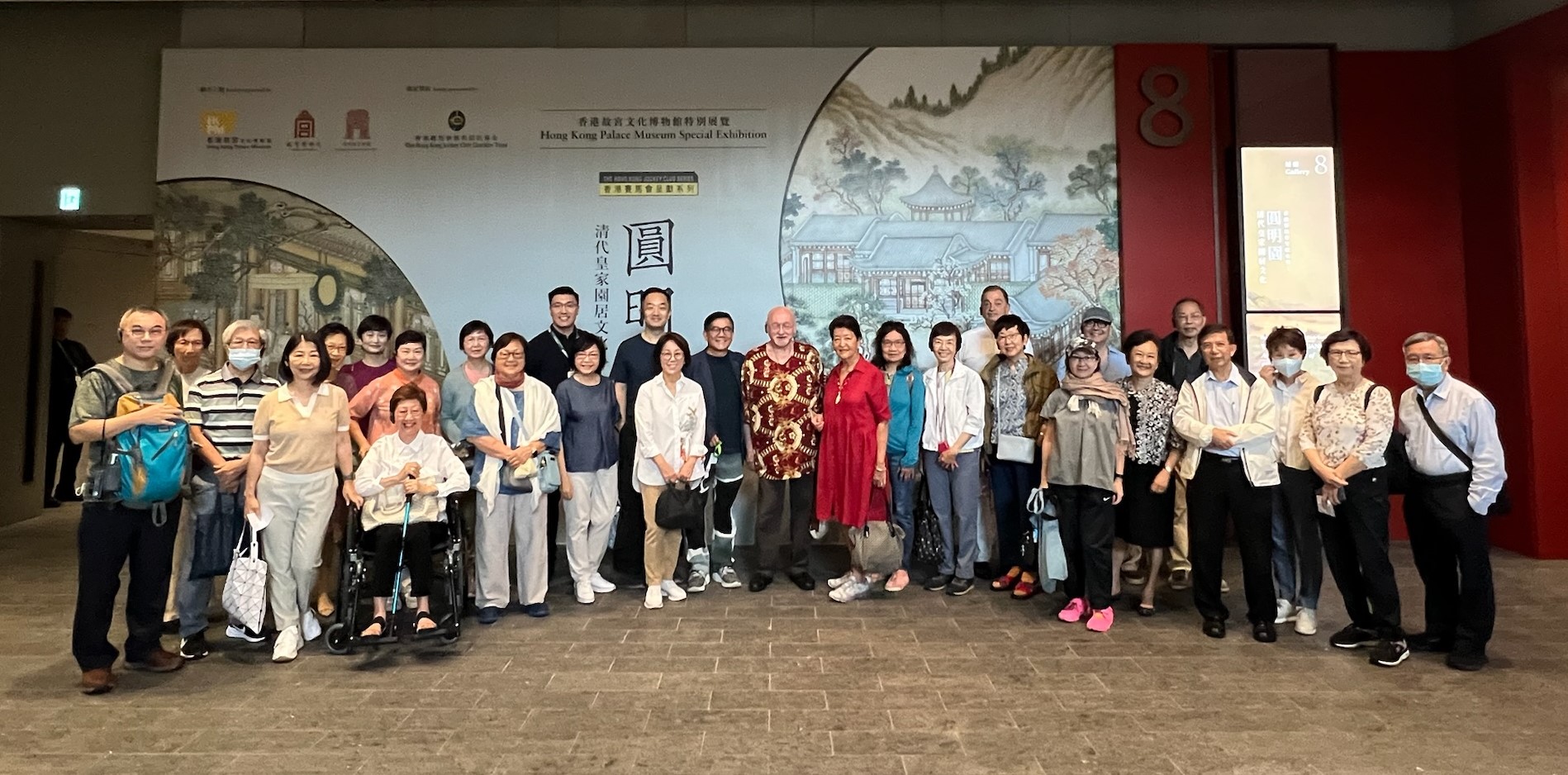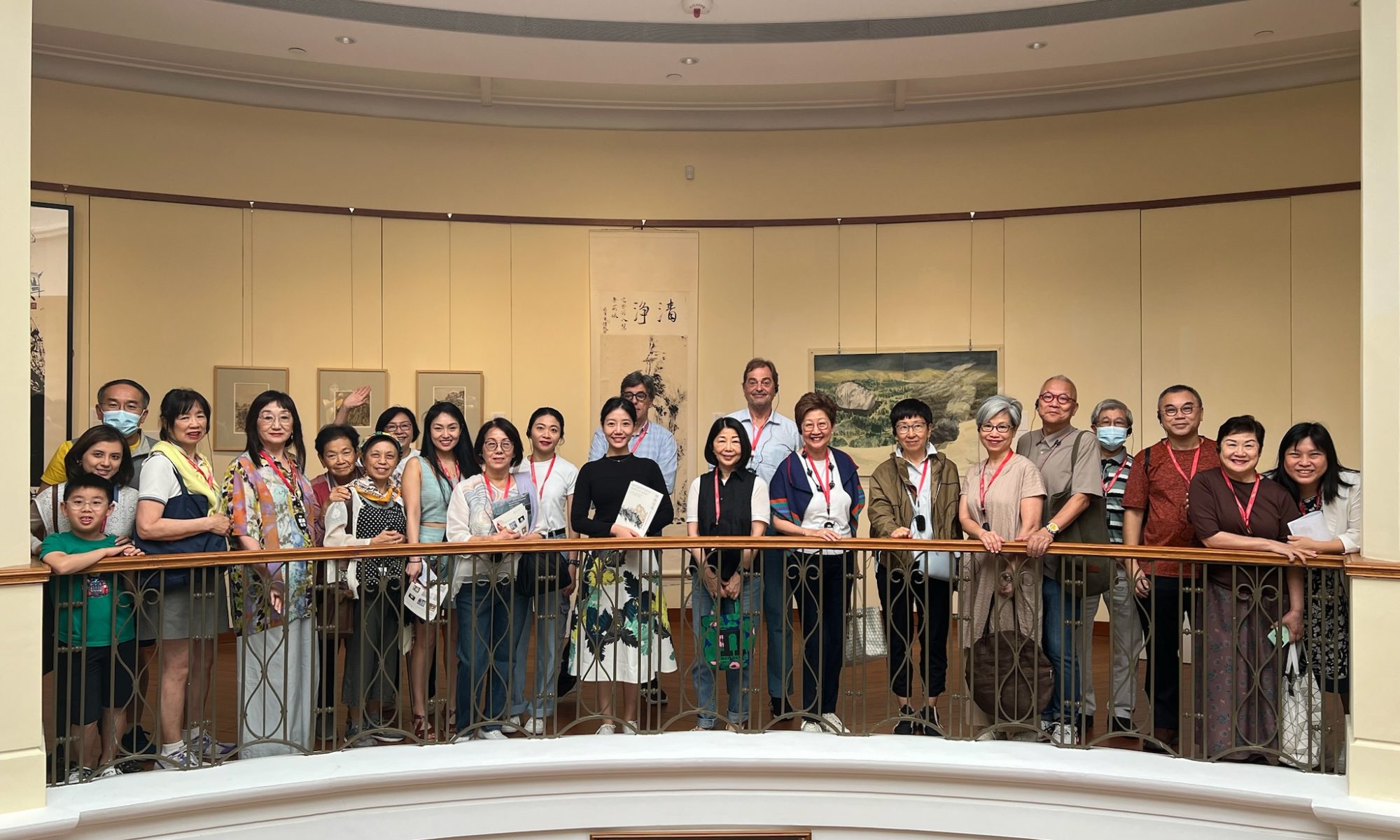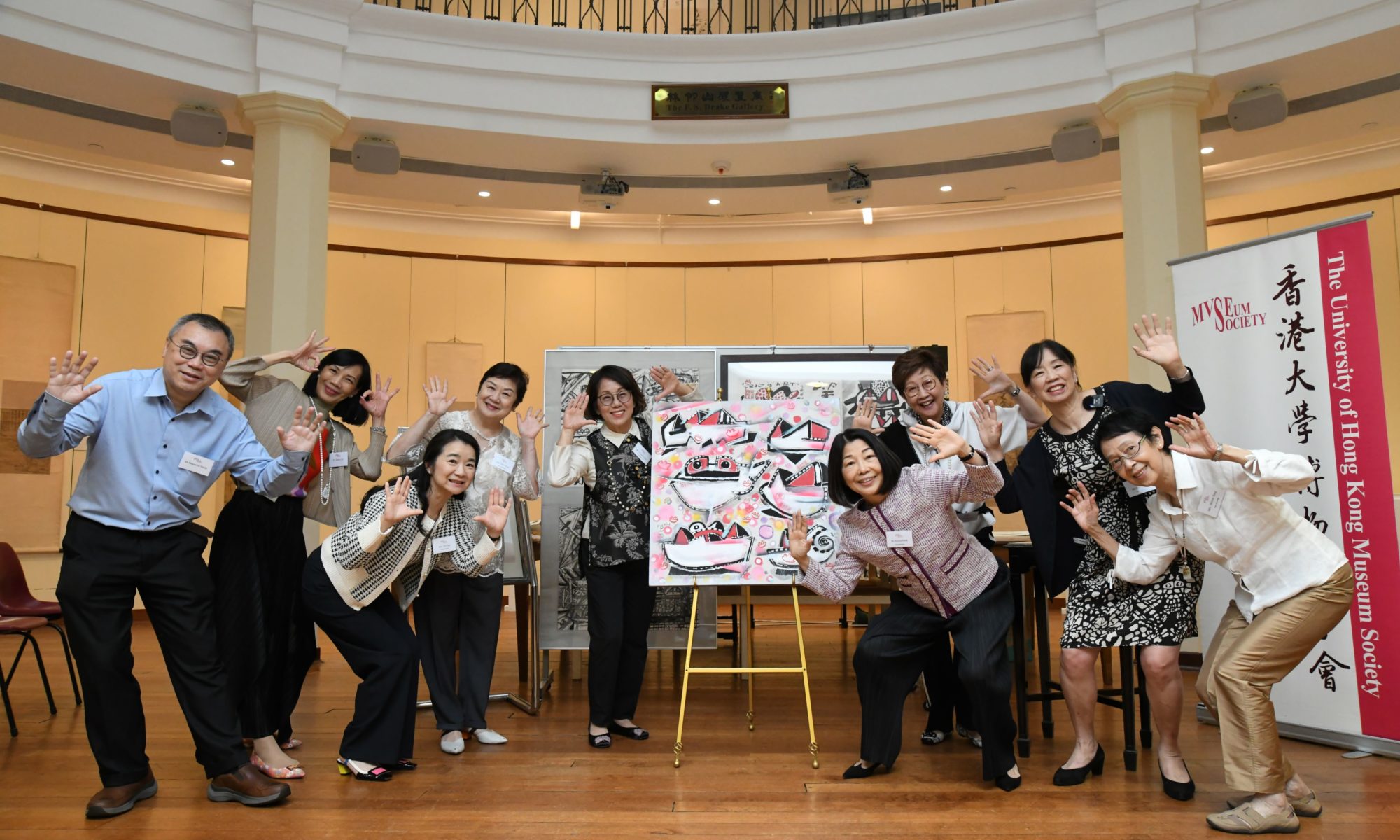Lecture & Lunch: Tradition and Nature: A Preview of Wang Shu’s Architecture in Hangzhou with Professor Wang Weijen at HKU
The presentation previews the architecture visit to Hangzhou in October, focusing on the projects of Wang Shu, the 2012 Pritzker Architecture Prize winner. In addition to introducing selected works of Amateur Architecture, the discussion also foregrounds the following issues that have influenced Wang’s architecture. They cover the context that shapes Wang’s thoughts, the value and methods of his design, as well as the mode of his practice.
- Modern Chinese Architecture
- Place and Culture Tradition: Jiangnan and Hangzhou
- Literati, Garden, and Landscape Painting of Song
- Tectonic Culture and Natural Construction
The presentation will also include other projects in Hangzhou designed by renowned architects, including Alvaro Siza, Renzo Piano, David Chipperfield, Tadao Ando, and Chang Yung Ho.
Speaker
Professor Wang Weijen is the Director of Wang Weijen Architecture, Andrew KF Lee Professor of Architecture Design and Director of Center for Chinese Architecture and Urbanism at University of Hong Kong. Integrating architecture with landscape and urban-rural conditions, his design projects, covering schools, campuses, and community buildings, received design awards including HKIA 2022 Project of the Year, AIA Awards, HKIUD Awards and others. With research focuses on typology of Chinese Architecture and Cities, his writings and designs have been published in numerous international and regional architectural journals. He is also the Editorial Director of HKIA Journal, Curator for Hong Kong on 2018 Venice Architecture Biennale, Curator of 2007 Hong Kong Biennale of Architecture and Urbanism.
Trip Announcement: Tradition and Nature: A Visit to Wang Shu’s Architecture in Hangzhou
Guided Viewing: “I.M. Pei: Life is Architecture” with Professor Wang Weijen at M+
The first comprehensive retrospective exhibition of I.M. Pei (1917-2019), I.M. Pei: Life is Architecture, will examine the works of this Chinese-American architectural master in detail. Pei’s high-profile architectural projects spanned seven decades and spanned a vast area, including the East Building of the National Gallery of Art in Washington, the Grand Louvre in Paris, the Bank of China Tower in Hong Kong, and the Museum of Islamic Art in Doha. His life and career were also intertwined by power relations, complex geopolitics, cultural traditions, and various urban styles around the world, forming a splendid and rich experience. His cross-cultural vision laid the foundation for the contemporary world.
Speaker
Professor Wang Weijen is the Director of Wang Weijen Architecture, Andrew KF Lee Professor of Architecture Design and Director of Center for Chinese Architecture and Urbanism at University of Hong Kong. Integrating architecture with landscape and urban-rural conditions, his design projects, covering schools, campuses, and community buildings, received design awards including HKIA 2022 Project of the Year, AIA Awards, HKIUD Awards and others. With research focuses on typology of Chinese Architecture and Cities, his writings and designs have been published in numerous international and regional architectural journals. He is also the Editorial Director of HKIA Journal, Curator for Hong Kong on 2018 Venice Architecture Biennale, Curator of 2007 Hong Kong Biennale of Architecture and Urbanism.
More information about the exhibition can be found here:
https://www.mplus.org.hk/tc/exhibitions/i-m-pei-life-is-architecture/
Image Credit:
M+ West Kowloon Cultural District
Talk and Afternoon Tea: “From India to Europe – The Story of Antique Kashmir Shawls” with Collector Romi Lamba
Shawls of Paisley design were in fashion for nearly 100 years, from 1790-1880, woven and embroidered in Kashmir and Europe during that period. The Kashmir shawls, known as Jamewaars in India, were hand woven in a unique style of tapestry weaving that is now a lost art, and are considered by many to be among the most beautiful and intricate examples of textile and carpet weaving. Together with their European counterparts, these shawls and their paisley patterns have left a permanent mark on the history of textile design.
Speaker
Romi Lamba has been collecting shawls for the past 35 years in the U.S., England and India. He works in Finance and lives in Hong Kong.
Image Credit:
Asia Art Hong Kong
Guided Viewing: Private Visit with Mr. Norman Lin, Collector of Chinese Paper Currency (Conducted in Cantonese) 中國歷代紙幣巡禮
The HKU Museum Society is privileged to organise a visit to one of the largest private collections of Chinese paper currencies. Collector Mr. Norman Lin will introduce different paper currencies dating from the Yuan, Ming, Qing dynasties to the Republic of China and the New China periods. Through this collection, we can have a glimpse of the the history of modern China.
人類的發展,由野蠻至文明,從經濟角度看,就是一部貨幣史。其中紙幣的發明是重大的里程碑,標置着由「以物換物」進展到「信用」制度的確立。中國作為文明古國,是世界上首先使用紙幣的國家,時間可追溯至北宋,當時的紙幣叫「交子」,歷經元朝、明朝、清朝,至鴉片戰爭後,中國被逼開放門户,讓外國商人及銀行進駐,紙幣的發行及種類大增,以換取中國政府及民間的黃金及白銀。
早期外商銀行發行的紙幣並非精美,隨著印刷技術不斷改進,紙幣設計及用色都十分豐富,美輪美奐。民國初期已有中國的銀行委託美國鈔票公司代印紙幣。
英國是最早來到中國的外商,銀行包括上海有利銀行、印度新金山中國滙理銀行、印度新金山中國渣打銀行(渣打銀行前身)、英商香港上海滙豐銀行(香港上海滙豐銀行前身)等等,其後美資、法資、日資、德資及俄資等銀行也相繼進駐。
近代中國的紙幣史,反咉中華民族的百年滄桑。
今次巡禮將參觀資深及知名的中國紙幣收藏家林建邦先生的珍藏,林先生將介紹「元、明、清、民國、新中國」時期的各式紙幣,包括不同銀行、地區和政府的紙幣,從當中多樣的變化一窺中國近代史。
Guided Viewing: “A Passion for Silk” with Dr. Isabelle Frank at the Indra and Harry Banga Gallery, CityU
A Passion for Silk: The Road from China to Europe
The art of silk (sericulture) emerged in China in 8,500 BCE, becoming an important financial industry over the succeeding millennia. Chinese farmers cultivated silkworms and the mulberry trees, while master craftsmen and women wove and embroidered shimmering, colourful fabric. The value of silk was so high that it was used for payments like gold. Though kept a state secret, by the third century CE the production of silk had become known to China’s neighbours while India had independently developed its own silk weaving tradition. In Europe, Italy first learned sericulture in the medieval period, followed by France a few centuries later. Through technological and artistic innovations, these two countries dominated the European silk market, while Chinese silk remained a luxury item for royalty and aristocrats. The fame of Chinese silk was such that in the 19th century China’s early trade routes came to be called the Silk Road.
Just as important as silk’s financial role is its cultural, political, technical, and religious significance. The fabric’s design and usage reveal developments in art, trade, fashion, and technology (to name just a few) and expose important cross-cultural influences. With over a hundred samples of silk clothing, accessories, and furnishings from China, India, Italy and France, this exhibition provides a rare overview of the crucial cultural role played by Chinese silk making and its influence abroad. Just as important, the exhibition reveals how European silk makers adapted the Chinese methods of production and artistic styles in ways that then influenced Chinese fabrication itself in the 20th century. Silk’s continuing appeal is visible in contemporary high fashion silk creations today.
Speaker
Dr. Isabelle Frank is an independent curator in Hong Kong. After six years as the founding director of the Indra and Harry Banga Gallery, City University of Hong Kong (2016 to 2022), she continued as consulting curators until 2024. Over this period, she mounted exhibitions combining art and technology and bridging Western and Asian cultures. She has collaborated with such international institutions as the National Palace Museum, Taiwan, the Veneranda Biblioteca Ambrosiana, Milan, Latvian National Museum of Art. An art historian by training (with a Ph.D. from Harvard University), she has published on Italian Renaissance art and decorative art (The Theory of Decorative Art 1750-1940, Yale University Press, 2000), and has edited many catalogues for the Banga Gallery, most recently Hunters, Warriors, Spirits. Nomadic Art in North China (2022) and Amber: Baltic Gold (2022).
Guided Viewing: Yuan Ming Yuan – Art and Culture of an Imperial Garden-Palace with Prof Puay-peng Ho and Dr Xander Yang at Hong Kong Palace Museum.
The HKU Museum Society is delighted to present a guided viewing of Yuan Ming Yuan – Art and Culture of an Imperial Garden-Palace with Prof Puay-peng Ho and Dr Xander Yang.
Shedding new light on Yuanming yuan (Garden of Perfect Brightness) by featuring over 190 spectacular paintings, architectural models, and other works associated with this once-magnificent Qing dynasty imperial garden-palace, which served as the principal residence of five Qing emperors. The exhibition highlights the garden’s space and layout, festival activities, aesthetic tastes of the emperors, and the stories about the imperial family dwelling in the garden. In this exhibition, visitors will discover the crowning achievements of imperial garden-palace design, the stories about the garden’s principal residents, and the history of the Qing imperial court.
Speaker
Professor Puay-peng Ho holds the UNESCO Chair on Architectural Heritage Conservation and Management in Asia. He is currently Professor at Department of Architecture, College of Design and Engineering at the National University of Singapore. Having close to 30 years of experience in the academia, Professor Ho’s main research interests are in architectural history and conservation practices, and how the knowledge can be translated in teaching and practice. Professor Ho is a conservation consultant, architect and adviser to some 100 conservation projects in Hong Kong and Singapore since 2003, including PMQ, Haw Par Villa, Comix Homebase, Oil Street Art Space, Court of Final Appeal, and New Campus for Chicago University Booth School. Professor Ho was also appointed to many public and private boards and committees in Hong Kong, including as Chairman of the Lord Wilson Heritage Trust, member of Town Planning Board, Antiquities Advisory Board, and currently a member of Senior Advisory Board of Global Heritage Fund and a Patron of the International Dunhuang Project of British Library.
Dr Yang Xu is Associate Curator of the Hong Kong Palace Museum. He received his doctorate in Architectural History from the Chinese University of Hong Kong. He curated the special exhibition “Yuanming yuan: Art and Culture of an Imperial Garden-Palace” (2024) and edited its accompanying catalogues. He has collaborated in curating the exhibitions “Encountering the Majestic: Portraits of Qing Emperors and Empresses” (2022), and “Odysseys of Art: Masterpieces Collected by the Princes of Liechtenstein” (2023). He is also the curatorial fellow for “From Dawn to Dusk: Life in the Forbidden City” (2022), “Qing Court in Four Seasons” (forthcoming in 2025), and other exhibitions. Prior to joining the Hong Kong Palace Museum, he held the positions of Postdoctoral Fellow at the National University of Singapore, and Assistant Curator at the National Museum of China. His research and curatorial expertise include traditional East Asian architecture, Chinese garden and landscape, and court arts. He has published in journals including Cultural Relics, Architectural Journal, Palace Museum Journal, Orientations, etc., and is acting as a co-advisor for the graduate advisory board at the School of Architecture, Tianjin University.
Photo Credit:
The Daoguang Emperor with his sons and daughters
Courtesy of Hong Kong Palace Museum
Guided Viewing of 2 Exhibitions: “Momentous Mountains: The Artistic, Philosophical and Cultural Engagement with Chinese Landscape Painting with Dr. Shuo Hua and Abstract Evolutions: Sixty Years of Paintings by Fong Chung-Ray with Dr. Sarah Ng at UMAG (Members Only)
The first exhibition Momentous Mountains invites visitors to immerse themselves in the captivating world of Chinese landscape paintings from the collection of the UMAG, HKU. This series of paintings spans from the early Qing dynasty (17th century) to contemporary times, representing the depth and virtuosity of the development of Chinese landscape paintings, extending from the orthodox Four Wang Masters of the early Qing, the Nanjing School, the Jiangxi School and the Shanghai School of Chinese paintings. Rarely displayed in public, the paintings include iconic works by renowned 20th-century masters and influential art educators—such as Liu Haisu (1896-1994), Fang Zhaoling (1914–2006), Wan Qingli (1945–2017) and Wesley Tongson (1957- 2012)—and other outstanding contemporary artists who trained in the leading Eastern and Western art academies.
The second exhibition Abstract Evolutions: Sixty Years of Paintings by Fong Chung-Ray, a distinguished Chinese American painter who is best known for his unique abstract art style, one which explores new directions for Chinese paintings. Fong was born in Henan province and he received his formal art training at the Cadre College of Arts and Crafts in Taiwan. The significance of Fong Chung-ray’s artistic oeuvre lies in his contribution both to the global art scene and the representation of Chinese artistic traditions in late twentieth- and early twenty-first-century California. As an ambassador for art, he has played a crucial role in fostering cultural exchange between China and the West, and his artworks have introduced richly diverse artistic traditions, techniques and themes to international audiences, promoting a deeper understanding and appreciation of Chinese culture.
Speakers
Dr. Shou Hua received a BA from the University of Pennsylvania and a PhD from the University of Hong Kong. She was a visiting PhD fellow at the Cluster of Global Art History, University of Heidelberg. Her research centres on modern East Asian paintings, art market studies and exhibition history in a cross-cultural context.
Dr. Sarah Ng is a historian of visual arts and material culture specializing in late imperial Chinese painting, calligraphy and ink rubbings. She is the curator of the Hong Kong University Museum & Art Gallery (UMAG). The relationship and reinterpretation of the Chinese tradition in contemporary art practice is her primary area of scholarly interest. Her work also addresses collecting, connoisseurship, canon formation, workshop practices, art conservation, museum studies and bookplates. She lectures on these subjects and other areas of expertise internationally.
Image Credit: Courtesy of UMAG
Summer Mountains WAN Qingli (1945–2017) 1995 L 90.5 x W 175 cm Ink and colour on paper Gift of WAN Qingli HKU.P.2002.1451
Fong Chung-Ray 1983-4 Acrylic on Canvas 91×121.5
2024 Annual General Meeting
Following the AGM, the Executive Committee is pleased to invite members to join the gift presentation of artworks donated by the Museum Society to the University Museum and Art Gallery’s 20th Century art collection. The artworks Smile (ink and colour on paper) and Love (mixed media on canvas) were created by renowned Hong Kong artist Kwok Mang Ho (Frog King). Since 1967, Kwok has produced numerous paintings, sculptures, installations and performances in over 3,000 art events worldwide. We are honoured that the artist Kwok Mang Ho will be present to give a calligraphy demonstration and performance.
About the Artist
Kwok Mang Ho, aka Frog King, was born in 1947 in Mainland China and grew up in Hong Kong. He spent 15 years in New York and returned to Hong Kong in 1995. Since 1967, Frog King has produced numerous performances, sculptures, paintings and installations in over 3,000 art events worldwide. A multimedia artist, Frog King received his art training at the Fine Art Grantham College of Education Hong Kong, the Chinese University of Hong Kong, The University of Hong Kong, and the Art Students League of New York.



